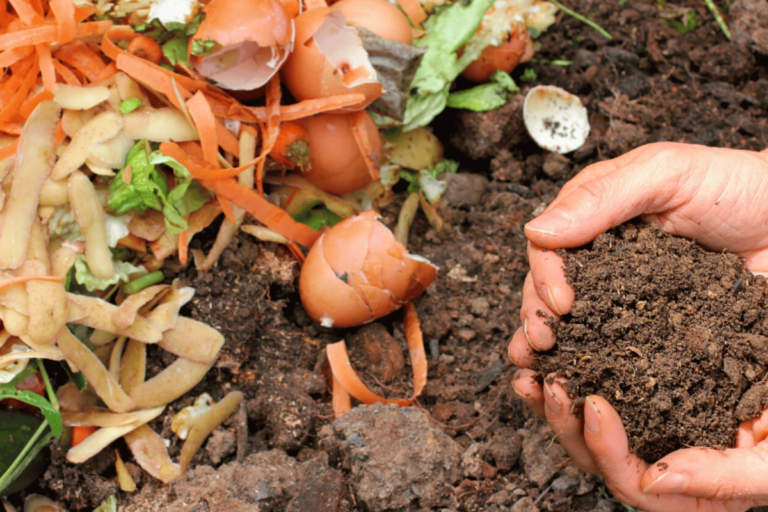Starting a Compost Pile and What It Entails
Composting is a simple and efficient way to recycle organic waste and create nutrient-rich soil for your garden. Composting kitchen scraps, fruit peels, and other organic materials can decrease the waste that goes to landfill, reduce greenhouse gas emissions, and improve soil health. Additionally, composting maintains moisture in the soil, improves the soil’s water retention capacity, minimizes erosion, and suppresses plant diseases and pests.
Environmental Benefits
The significant advantage of composting is that it produces humus. Humus is a blackish-brown crumbly substance that helps solve soil infertility and poor structural problems. Humus provides improved air space within soils, increasing water storage capacity within these regions and promoting plants’ growth more comfortably. Compost also serves as a reservoir for nutrients plants need, such as nitrogen, phosphorous, and potassium, used in growth.
Example: For instance, compost can enhance organic matter in the soil, hence better soil health and higher agricultural productivity.
Economic Benefits
Composting cuts down on fertilizer costs while enhancing the condition of the soil. Chemical fertilizers are expensive, but this need can be minimized through composting. This process also saves time by avoiding the disposal of garden rubbish.
Example: Gardeners who practice composting save money on chemical inputs, decreasing chemical runoff levels in our rivers.
Environmental Impact
Composting reduces methane emissions from decomposing organic matter in landfills, which are potent greenhouse gases, contributing to climate change mitigation works and environmental sustainability.
Example: According to EPA (2013), landfill waste has been considerably reduced due to the extensive use of compost, which has led to less greenhouse gas emissions.
Easy Steps to Begin Composting at Home
You are starting a home-based compost pile only if it requires few necessary tools, so it’s a breeze. First, choose a proper location for your compost bin or pile, which should be easily accessible, have good drainage and receive partial sunlight. You can purchase a ready-made compost container or construct one using wooden pallets, chicken wire or barrels.
Gathering Materials
Example: To keep the correct carbon-to-nitrogen ratio used in making an ideal layer of compost, you need one brown for every second layer of greens.
Next, you should collect materials to start your compost heap. Compostable materials are divided between greens and browns. Nitrogen is provided by greens such as kitchen scraps, grass clippings, and fresh plant material, while browns like dry leaves, straw, and cardboard supply carbon. An equal ratio of greens to browns must always be maintained.
Building Your Compost Pile
When starting your compost pile, layer the greens and then the browns in 2-4 inch layers each time. Keep it moist, not wet. Turn the pile with a pitchfork or shovel frequently to help aerate it and speed up decomposition.
Example: Introducing oxygen into the decomposition process by turning the compost allows faster decomposition since it promotes microbial activity that requires air for survival.
Monitoring and Maintenance
Check water levels and temperatures in your compost heap regularly. It should remain slightly wet like a wrung-out sponge after squeezing while also being warm to the touch; otherwise, add more brown matter or water when required.
Example: Alternatively, if adequately cared for, a well-tended backyard composter can produce temperatures ranging from 140°F –160°F, which are capable of decomposing organic matter quickly and ultimately killing plant pathogens and weed seeds.
How to Use Your Compost
It can take as little as a few months, depending on how much you put into it and the frequency with which you turn it. It is a hot, finished compost that is dark in colour and crumbly to the touch. It can enrich soil fertility in gardening, such as mulch around plants or a top lawn dressing.
Example: Before planting crops, apply compost to garden beds to improve soil fertility and structure.
In conclusion
Composting is an environmentally friendly way of reusing kitchen and garden waste and transforming it into valuable soil conditioners at no cost. Start a compost pile today to minimize your waste stream, enhance the health of your soils, and save some money by buying gardening tools. Follow these easy steps to begin home composting to have richer soils and a healthier life by having more sustainable lifestyles. In this manner, we shall be able to create a world that embraces green by ensuring that everyone takes the time to develop manure pits every day.
Explore More Gardening Tips and Ideas
- Hydroponics for Beginners: Start Growing Today!
- Container Gardening for Small Spaces: Grow Big Ideas
- Indoor Gardening Techniques: Grow Plants at Home
- Composting Basics for Home Gardens: Get Started!
- Home Gardening Success: Essential Tips and Tricks
Source: Composting For Beginners: Changing Waste Into Gold


